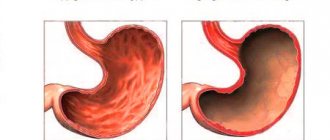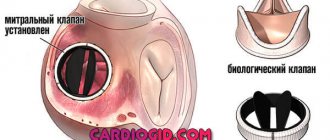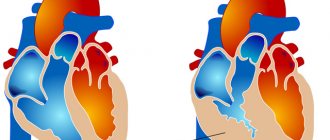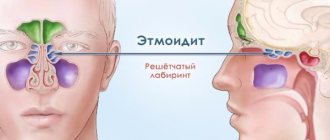Leukemia is a disease in which the body of a sick person produces many defective white blood cells - leukocytes that are unable to perform their functions, in particular, fight infections and tumor cells. Sometimes you can hear other names for this pathology - “leukemia” or the more common term “blood cancer”.
Our expert in this field:
Sergeev Pyotr Sergeevich
Deputy chief physician for medical work, oncologist, surgeon, Ph.D.
Call the doctor
In leukemia, the main hematopoietic organ, the red bone marrow, is affected. Genetic mutations occur in the DNA of its cells, which causes the formation of “wrong” leukocytes.
The Medicine 24/7 clinic uses the most modern methods of diagnosing and treating blood leukemia. We employ specialist doctors who have extensive experience in the fight against this group of diseases.
General information
Lymphocytic leukemia , what is it?
This is a malignant disease of the hematopoietic system, which occurs as a result of mutation of cells of the immune system of lymphocytes (in particular B-lymphocytes). The disease manifests itself by an increase in the number of lymphocytes (in the bone marrow and blood), an increase in the size of the liver, lymph nodes and spleen. Lymphocytic leukemia is the most common form of hemoblastosis and is a slow-onset disease, so 40% have no indication for starting treatment after diagnosis.
B-cell lymphocytic leukemia can be acute (called lymphoblastic leukemia) or chronic. Chronic lymphocytic leukemia is considered a disease of the elderly (average age 60-70 years and older), although recently this form of leukemia has become “younger” and occurs at the age of 35-40 years. Young people have a shorter latency period (from the time of diagnosis to the start of treatment) - that is, the process progresses more quickly. The older the patients, the more often they are diagnosed with a benign or “smoldering” form of the disease, characterized by a calm course. But at the same time, they develop complications from various systems and inflammatory diseases.
Between the two forms - “smoldering” and rapidly progressing, there are options in which cytostatic therapy is successfully carried out and progression is restrained. Of all the forms, the most common are: progressive, benign, tumor, splenic. The increasing prevalence of this hemoblastosis necessitates an active search for more effective treatment methods. ICD-10 code for chronic lymphocytic leukemia C91.1.
The course of chronic lymphocytic leukemia is accompanied by suppression of the immune system, and this leads to the risk of infectious complications, especially in the elderly. Often infectious complications are the first manifestations of this disease. The difficulty of treatment is that chemotherapy is accompanied by a decrease in the level of neutrophils, which aggravates immune disorders. In the elderly, at the end of chemotherapy, viral, bacterial and fungal infections are most often associated, which are the cause of mortality in 60% of cases.
Types of acute leukemia
The international FAB classification differentiates acute leukemia according to the type of tumor cells into two large groups - lymphoblastic and non-lymphoblastic. In turn, they can be divided into several subspecies:
1. Acute lymphoblastic leukemia:
• pre-B-shape
• B-shape
• pre-T-shape
• T-shape
• Other or neither T nor B form
2. Acute non-lymphoblastic or, as they are also called, myeloid leukemia:
• acute myeloblastic, which is characterized by the appearance of a large number of granulocyte precursors
• acute monoblastic and acute myelomonoblastic, which are based on the active reproduction of monoblasts
• acute megakaryoblastic - develops as a result of active proliferation of platelet precursors, the so-called megakaryocytes
• acute erythroblastic, characterized by an increase in the level of erythroblasts
3. Acute undifferentiated leukemia is a separate group
Pathogenesis
Normal B lymphocytes produce antibodies that bind antigens from bacteria and viruses. Foreign antigens of microorganisms are stimuli for the development of lymphocytic leukemia . The tumor substrate is cells that have been in contact with the antigen and turned into memory cells. Constant antigenic stimulation causes the appearance of gene mutations, resulting in neoplastic transformation of B-lymphocytes and the formation of a clone of leukemic cells. The final stage of a B lymphocyte is a plasma cell, and in CLL, due to mutations, lymphocytes do not develop into plasma cells.
The clone of altered malignant cells rapidly proliferates. Proliferation of malignant cells occurs in the lymph nodes and bone marrow in the so-called proliferative centers. A large number of small, mature lymphocytes are formed and accumulate not only in the bone marrow and blood, but also in the lymph nodes, spleen, and liver, causing leukemic infiltration of these organs and disrupting their functions. With a high proliferation rate, the disease will have an aggressive course. However, it has been established that the development of CLL is largely associated with the accumulation of malignant lymphocytes, which live for a long time, than with their proliferation.
What are the symptoms of leukemia?
The clinical picture for different forms of leukemia will vary somewhat. In acute forms, symptoms occur quickly, reminiscent of the flu. Chronic leukemia may not cause any complaints for years; they are often diagnosed by chance when characteristic changes are detected in a general blood test.
Most of the symptoms of leukemia are due to the fact that tumor cells suppress the growth of normal cells, as a result of which the latter cease to cope with their functions:
- Anemia occurs when the level of red blood cells and hemoglobin in the blood decreases. It manifests itself as a constant feeling of fatigue, shortness of breath, pallor, dizziness, and chest pain.
- Thrombocytopenia is a decrease in the level of platelets, which are responsible for stopping bleeding. In this case, increased bleeding develops. It manifests itself in the form of prolonged bleeding after cuts, bruises on the skin, nosebleeds, bleeding gums, long and heavy periods in women, and streaks of blood in the stool. In severe cases, pulmonary hemorrhage develops.
- Leukopenia is a decrease in the level of white blood cells, which normally should protect the body from infections. Patients often suffer from infectious diseases; their course is longer and more severe. Episodes of fever (increased body temperature to 38 degrees or more), severe sweating at night may be bothersome.
Tumor cells can accumulate in the lymph nodes, liver, spleen, and tonsils. As a result, swelling occurs in these organs and they enlarge. Condensed enlarged lymph nodes under the skin can be felt; if they are large, they are visible visually. If the liver and spleen are enlarged, the patient quickly becomes full when he has taken a small amount of food.
Some patients quickly lose weight, although they eat as usual and do not go on any diets. Due to damage to the red bone marrow, bone pain may occur.
Classification
B cell tumors:
- Acute lymphocytic leukemia (or acute lymphoblastic leukemia) refers to tumors of B-lymphocyte precursors (immature lymphoid cells called lymphoblasts). When the disease occurs, their uncontrolled proliferation occurs. Acute lymphocytic leukemia is the most common malignant blood disease in childhood.
- Chronic lymphocytic leukemia refers to tumors with the phenotype of mature lymphocytes and is typical for elderly people.
Chronic lymphocytic leukemia
There are the following forms of CLL:
- Benign.
- Progressive (or classic).
- Tumor.
- Splenomegalic.
- Bone marrow.
- Abdominal.
- Prolymphocytic.
The benign form is characterized by a very slow increase in lymphocytosis, which occurs over several years and even decades, in parallel with an increase in the number of leukocytes. The leukocyte level usually does not exceed 30×109/L and very rarely reaches 50×109/L.
In this form, the lymph nodes are either not enlarged or slightly enlarged (only cervical ones and no more than 2 cm). Such patients are not subject to treatment; they are under observation (a clinical blood test is carried out every 3 months). Patients with this form are able to work; they are only prohibited from working in harmful conditions and increased insolation.
Progressive (or classic) form. This form occurs in 45-50% of cases of the disease. The number of leukocytes and the size of lymph nodes increases every month. The increase in the number of leukocytes is very significant - 500-1000×109/l. At the same time, the number of lymphocytes increases (they occupy 90% of the leukocyte formula). Mature forms of lymphocytes are detected, but 5-10% of prolymphocytes can be detected.
The level of hemoglobin , red blood cells and platelets in the initial stages is normal. At the same time, the lymph nodes enlarge. Then comes the enlargement of the spleen, which rarely reaches very large sizes. Somewhat later the liver also enlarges. In some cases, manifestations of the disease in the form of enlargement of the listed organs are absent even with very high leukocytosis and lymphocytosis .
The tumor form is manifested by a significant increase in lymph nodes, which have a dense consistency, with a relatively low leukocytosis (20-50 × 109/l). The enlargement of the spleen is often moderate. The tonsils are enlarged and almost closed. With such significant hyperplasia of lymphatic tissue, intoxication is poorly expressed for a long time. The bone marrow contains no more than 20-40% lymphocytes. The tumor form is characterized by:
- Enlarged lymph nodes that merge to form conglomerates. First, the cervical, axillary and inguinal areas increase, then the paratracheal ones with compression of the trachea and bronchi. In some patients, enlarged intra-abdominal lymph nodes are detected.
- Lymphocytic infiltration of the bone marrow.
- Rapidly progressive course, survival no more than 3 years. The tumor form is the basis for cytostatic therapy.
The splenic form occurs with a predominant enlargement of the spleen. In this case, the lymph nodes are moderately enlarged, and the level of leukocytes can be different, increasing over the course of months. The spleen in patients occupies almost the entire abdominal cavity and causes compression of other organs and pain. Often the liver does not enlarge significantly. Hemolytic anemia is common . Survival rate is 5 years. The abdominal form is characterized by an enlargement of only the lymph nodes of the abdominal cavity over the course of months and years. Ultrasound and CT are used to detect this form of the disease.
The prolymphocytic form differs in the structure of lymphocytes, which have a large nucleolus. Chromosome abnormalities are very often detected; this form progresses rapidly and is difficult to treat. Life expectancy is 3 years. Main features of the prolymphocytic form:
- tendency to hemorrhages ;
- age over 70 years;
- significant enlargement of the spleen;
- lymph node enlargement is slight;
- infiltration of the skin with leukemic cells, which manifests itself as a papular rash in the face, arms, and torso;
- blood test: lymphocytes 100×109 /l and half of them are prolymphocytes.
The bone marrow form is characterized by progressive pancytopenia and almost complete replacement of bone marrow by mature lymphocytes. At the same time, the lymph nodes, spleen and liver are not enlarged. The prognosis is very unfavorable.
B-cell lymphocytic leukemia varies in grades, which reflect the natural course of the disease and the gradual increase in tumor mass in different organs. The K. Rai classification reflects this and allows one to predict the course of the disease and patient survival.
Chronic lymphocytic leukemia of the 1st degree is characterized by lymphocytosis, and at stage 1 there is an enlargement of the lymph nodes. Survival rate 9 years.
Chronic lymphocytic leukemia of the 2nd degree occurs with lymphocytosis, enlargement of the lymph nodes, and in addition, at stage 2, an enlargement of the spleen and/or an enlargement of the liver . Average survival rate is 6 years.
Chronic lymphocytic leukemia grade 3 is characterized by lymphocytosis and a decrease in hemoglobin less than 100 g/l. A decrease in hemoglobin at stage 3 indicates involvement of the bone marrow in the process and is the main criterion regardless of the enlargement of organs and lymph nodes. Survival at this stage is 1.5 years.
Chronic lymphocytic leukemia stage 4 is the most unfavorable: in addition to lymphocytosis, stage 4 is characterized by a decrease in platelet levels to less than 100×109/l, which threatens the development of bleeding, including death for the patient.
Thrombocytopenia is determining for this stage, regardless of the enlargement of organs and lymph nodes. Survival rate is no more than 1.5 years.
Causes, risk factors
It is impossible to say exactly why in each specific case mutations occur in the cells of the hematopoietic organs and leukemia develops. Only a few factors are known to increase risks:
| Form of leukemia | Risk factors |
| Acute lymphoblastic leukemia |
|
| Acute myelogenous leukemia |
|
| Chronic lymphocytic leukemia |
|
| Chronic myeloid leukemia |
|
It is important to understand: risk factors to a certain extent increase the likelihood of developing leukemia, but they are not 100% likely to cause it. Often the disease develops in people who do not have any of the factors from this list. At the same time, many people who smoke, have been exposed to toxic substances, ionizing radiation, have a family history and genetic disorders will never develop leukemia.
Causes
As is known, carcinogens play an important role in the development of many oncological diseases, but no connection has been established between their action and the development of chronic lymphocytic leukemia. The connection between this disease and radiation, viruses, and nutrition has also not been proven. However, it has been proven that constant exposure to pesticides and insecticides increases the risk of developing the disease.
Predisposition to CLL is inherited and it has been proven that the risk of developing this disease in immediate relatives is 8.5 times higher than in the general population. Moreover, in the second generation there is an earlier development of the disease and more rapid progression. When studying chromosomal disorders, it was revealed that they manifest themselves in the form of an additional chromosome 12 and deletion of chromosomes 6 and 13, 11.
T-cell acute lymphoblastic leukemia
Chronic lymphocytic leukemia, represented by T lymphocytes, occurs in approximately 5% of cases.
It is a tumor of CD4 lymphocytes caused by human T-lymphotropic virus type 1 (HTLV-I). The disease manifests itself as a generalized (spreading throughout the body) enlargement of lymph nodes and skin lesions. Due to immunodeficiency, the incidence of secondary infections is very high.
Men get sick more often than women. Various combinations of antitumor agents are used for treatment.
Symptoms of lymphocytic leukemia
Symptoms of chronic lymphocytic leukemia are very diverse and largely depend on the age of the patient. For some, the disease proceeds calmly, and patients do not need treatment for a long time. For others, the process is rapid and difficult, so immediate treatment is required.
One of the reasons for this diversity of the course is the age characteristics of the patients. In older people, it is more often a non-progressive, sluggish form, in which symptoms do not change for many years - this can be 20-30 years. At a young age, a progressive course and a high incidence of tumor forms are observed.
At first, the complaints are nonspecific: weakness, increased sweating , weight loss, frequent colds. At this stage, hemoblastosis is detected by chance when visiting a doctor for various reasons. Subsequently, the main symptoms of chronic lymphocytic leukemia in all patients include enlargement of the lymph nodes of the spleen and liver. First, there is a slight increase in nodes in a certain sequence: cervical, then axillary, inguinal and other groups.
The first increase in nodes may be associated with respiratory diseases, when enlarged nodes are detected in the neck. At the same time, “fullness” in the ears may appear and hearing may deteriorate, which is associated with the proliferation of lymphatic tissue in the eustachian tubes, which swells during infection. The largest sizes of nodes are observed in young people - the sizes of cervical and axillary nodes can reach 4-5 cm and turn into conglomerates.
Lymph nodes, regardless of age, are elastic, mobile (with the exception of “packets” of nodes) and painless. An increase in abdominal and retroperitoneal is more often observed in young people. Moderate enlargement of the spleen is observed in young patients, and significant splenomegaly is observed in older patients. Their spleen reaches enormous sizes, descending into the small pelvis. This is explained by the fact that in young people, infiltration of nodes by tumor cells predominates, in older people - in the spleen, the enlargement of which is manifested by severity or discomfort, as well as early saturation. An enlarged liver is manifested by severity, nausea, loss of appetite and belching are possible.
Due to the accumulation of tumor cells in the bone marrow and inhibition of normal hematopoiesis, anemia develops in the later stages, manifested by dizziness , hemorrhages and bleeding due to a decrease in platelet . Characterized by pronounced suppression of immunity , therefore, there is a predisposition to infections (colds, pyoderma , pneumonia ).
The terminal stage is characterized by progressive deterioration, exhaustion, intoxication, lack of appetite, and fever. An increase in temperature may be associated with the disease itself, as well as with severe pneumonia or pulmonary tuberculosis . Severe generalized infection is very common in the terminal stage and is the cause of their death. Skin and urinary tract infections are possible. Herpetic infection can also occur at any stage, but more often at the terminal stage.
One of the dangerous signs of the terminal stage is renal failure , which is associated with the infiltration of kidney tissue by leukemic cells. It manifests itself as a decrease in urine output, and the content of urea and residual nitrogen in the blood increases significantly. In the terminal phase, the appearance of neuroleukemia , which is manifested by headaches, vomiting, and peripheral paralysis. shortness of breath and respiratory failure develop .
A characteristic feature of the final stage is anemia , which is associated with lymphoid infiltration of the bone marrow and displacement of the red hematopoietic germ. Anemia is manifested by severe weakness , shortness of breath , and dizziness . Some patients develop a blast crisis and transform CLL into other lymphoproliferative diseases ( Richter syndrome , plasma cell leukemia , prolymphocytic leukemia , myeloma ).
Treatment of acute leukemia
The treatment regimen for acute leukemia depends on the age and condition of the patient, the type and stage of development of the disease, and is always calculated individually in each specific case.
There are two main types of therapy for acute leukemia - chemotherapy and surgical treatment - bone marrow transplantation.
Chemotherapy consists of two successive stages:
• The goal of the first stage is to induce remission. With the help of chemotherapy, oncologists achieve a decrease in the level of blast cells
• Consolidation stage necessary to destroy remaining cancer cells
• Reinduction, as a rule, completely repeats the scheme (drugs, dosages, frequency of administration) of the first stage
• In addition to chemotherapy drugs, the general treatment regimen contains cytostatics.
According to statistics, the total duration of chemotherapy treatment for acute leukemia is about 2 years.
Chemotherapy in combination with cytostatics is an aggressive method of exposure, causing a number of side effects (nausea, vomiting, deterioration of health, hair loss, etc.). In order to alleviate the patient's condition, concomitant therapy is prescribed. In addition, depending on the condition, antibiotics, detoxification agents, platelet and red blood cell mass, and blood transfusions may be recommended.
Bone marrow transplantation
Bone marrow transplantation provides the patient with healthy stem cells, which later become the ancestors of normal blood cells.
The most important condition for transplantation is complete remission of the disease. It is important that the bone marrow, cleared of blast cells, is refilled with healthy cells.
In order to prepare the patient for surgery, special immunosuppressive therapy is carried out. This is necessary to destroy leukemia cells and suppress the body's defenses to reduce the risk of transplant rejection.
Contraindications for bone marrow transplantation:
• Impaired functioning of internal organs
• Acute infectious diseases
• Relapse of acute leukemia that does not go into remission
• Elderly age
Tests and diagnostics
- Clinical blood test. A blood test for lymphocytic leukemia reveals a characteristic increase in the level of leukocytes due to lymphocytes ( lymphocytosis ). Among the lymphocytes, mature and small ones predominate. Leukocytosis ranges from 5x109/l to 10x109/l, which is a reliable sign of the disease, but in most cases leukocytosis reaches 20-50x109/l. If there is a high leukocytosis of 100-500x109/l when the patient first visits the doctor, then this indicates a long undiagnosed period. A blood test reveals a small number of prolymphocytes (2–3%), and in some patients, single lymphoblasts (1–2%). A characteristic feature is the detection of Botkin-Gumprecht cells (destroyed lymphocyte nuclei) in varying numbers. Blood test indicators for lymphocytic leukemia, in particular a significant increase in the number of leukocytes and lymphocytes, indicate high activity of the tumor process and explain the rapid progression of the disease. The blood picture changes: lymphocytosis gradually increases, if in the initial stages lymphocytes make up 60-70%, then in the final stage of the disease it is 90% or more, which happens with total replacement of bone marrow lymphocytes. Many patients may have only lymphocytosis (40-50%) for a long time with a leukocyte value at the upper limit of normal. The level of hemoglobin and platelets is most often normal, but with high leukocytosis there is a decrease in these indicators.
- Bone marrow puncture examination. In the early stages, a slight increase in the percentage of lymphocytes in the myelogram (30-50%), and in the later stages, lymphocytes make up 95% of the bone marrow elements. Young people, compared to older people, are characterized by preservation of erythro and granulocytopoiesis .
- Immunological research. Lymphocytes in CLL have a characteristic immunophenotype - CD19, CD5, CD23 antigens and, in small quantities, CD20 and CD22 antigens are found on the surface of tumor cells.
- To identify chromosome mutations, a cytogenetic study is performed, which reveals an additional chromosome 12 and deletions of chromosomes 6 and 13, 11.
Diagnostic methods
Oncohematologists treat leukemia. Patients are usually referred to them by general practitioners after corresponding symptoms or changes in the general blood test are detected.
During the initial appointment, the oncohematologist asks the patient about his symptoms, conducts an examination, palpates the abdomen and subcutaneous lymph nodes. To determine the number of different types of blood cells and types of leukocytes, a general clinical blood test with a leukocyte formula is performed.
The diagnosis is finally confirmed by the results of a red bone marrow biopsy. A tissue sample is obtained using a special needle, usually from the sternum or iliac crest. The material is searched for tumor cells, their characteristics are determined, and they are checked for mutations. Histological, morphological, cytochemical, cytogenetic, immunophenotypic, immunohistochemical and molecular genetic studies are carried out. This helps to establish an accurate diagnosis and determine the optimal treatment strategy.
Procedures and operations
Stem cell transplantation is important in the treatment of patients. Allogeneic and autologous transplantation can be used. In autologous surgery, the source of hematopoietic stem cells is the patient himself. Cells are harvested during treatment and cryopreserved. In an allogeneic transplant, cells are obtained from siblings or a matched unrelated donor. Allogeneic transplantation can lead to a complete cure, but its disadvantage is complications due to graft rejection (graft-versus-host disease). The high toxicity of allogeneic transplantation limits the possibilities of its use.
AlloBMT has a high curative potential and allows long-term disease control. An important factor that influences the decision to undergo alloHSCT is the lack of response to therapy. In patients with chromosomal aberrations (p53 deletions and 17p13 deletions), allogeneic transplantation is performed in the first line of treatment. After allogeneic transplantation, the relapse rate is reduced, in contrast to auto-HSCT.
Auto-HSCT is performed to secure the first or second remission. It has no significant advantage over standard chemoimmunotherapy and is therefore not standard of care. AutoHSCT may be used in selected cases, for example in Richter syndrome .
Modern principles of treatment
Treatment tactics for leukemia vary. First of all, it depends on factors such as the type of leukemia, damage to various organs by tumor cells, including the central nervous system, age, general health of the patient, and the presence of concomitant diseases.
The doctor may prescribe the following techniques in various combinations:
- Classical chemotherapy is used in most patients. Chemotherapy drugs from different groups are used, in the form of solutions for intravenous administration and tablets for oral administration. The patient may be shown only one drug or a combination of two or more.
- Targeted drugs, unlike conventional chemotherapy drugs, act more specifically. They block certain molecules that activate the proliferation of tumor cells and are necessary for their survival.
- Radiation therapy can be given locally, to areas where there are clumps of tumor cells, or to the entire body. It is also used to prepare for red bone marrow transplantation.
- Red bone marrow stem cell transplantation . First, high doses of chemotherapy and radiation are used to destroy the patient's damaged red bone marrow tissue. Then stem cells, previously obtained from the patient himself or from a donor, are injected into the bloodstream. They settle in the red bone marrow and give rise to new normal white blood cells.
Typical treatment regimen for acute lymphoblastic leukemia
Treatment of acute lymphoblastic leukemia consists of three phases: induction, consolidation and maintenance therapy.
The goal of induction is to achieve remission, that is, a state in which no tumor cells are detected in the red bone marrow during examination. For this purpose, chemotherapy drugs are used: vincristine, dexamethasone or prednisone, doxorubicin or daunorubicin. Some patients are indicated: cyclophosphamide, L-asparaginase, high doses of methotrexate or cytarabine.
If the Philadelphia chromosome is detected in tumor cells, the targeted drug imatinib (Gleevec) is used. If the central nervous system is affected, high-dose systemic chemotherapy, intrathecal administration of chemotherapy, and radiation therapy are performed.
During the consolidation phase, intensive chemotherapy treatment is continued, since, despite remission, there is a risk of relapse. The course usually lasts several months. For some patients, doctors offer red bone marrow cell transplantation.
Maintenance therapy is continued for an average of 2 years. The patient is administered methotrexate and 6-mercaptopurine. In some cases, they are combined with vincristine, prednisone and other drugs.
If the patient does not respond to treatment, or the leukemia recurs, chemotherapy is prescribed again, or the question of stem cell transplantation arises. If the disease returns over and over again, and it becomes clear that it is useless to fight it, palliative therapy is started, which helps to prolong the patient’s life and relieve him of painful symptoms.
The Medicine 24/7 clinic uses all currently available capabilities to combat acute leukemia. We have all the latest generation drugs available to our patients. Our doctors provide therapy in accordance with modern international recommendations.
We will call you back
Leave your phone number
Diet
Proper nutrition for chronic lymphocytic leukemia helps maintain the patient’s health. Nutrition should be balanced in essential substances. Patients need complete protein foods, especially after chemotherapy . You can eat lean meat, poultry, fish, and dairy products. Sources of plant protein include nuts, soy products and other legumes, which can be consumed in moderation if tolerated (no bloating).
Carbohydrates are a source of energy, therefore, to replenish energy costs, patients should consume mainly complex carbohydrates: fruits, bread, vegetables, cereals. Fats in the diet should be represented by vegetable oil (cold-pressed oils with a high content of omega-3 fatty acids - flaxseed), nuts, and fish oil. The diet should consist of vegetables, fruits and whole grain products. Each meal should include 150 g of vegetables or fruits (the total amount per day is 500-600 g). On the recommendation of a doctor, a complex of vitamins and microelements can be additionally introduced into the patient’s diet.
General nutritional principles look like this:
- Increase your consumption of grains, fruits, vegetables, and nuts.
- Predominant consumption of fish and healthy oils.
- Fractional meals.
- Monitor your drinking regime. If there are no contraindications, drink up to 2 liters of purified water per day.
- Avoid refractory fats.
- Limit the consumption of simple carbohydrates (sugar, sweets, preserves, jams, sweet pastries).
- Avoid fried and smoked products.
- It is unacceptable to consume products with food additives.
Symptoms of leukemia by stage
The early stages of this acute type of disease are characterized by the following symptoms:
Periodic bleeding (difficult to stop);- Pain in the abdominal cavity, especially from above;
- Unpleasant sensations in the joints (they can be supplemented by “ache” in the bones);
- Rapid formation of bruises or hemorrhages;
- Significant growth in the size of the liver and lymph nodes;
- Constant weakness, lethargy, apathy;
- A condition similar in symptoms to fever;
- Recurrent infectious diseases;
- Frequent urge to urinate.
The following signs are characteristic of late stages of leukemia:
- Lips and nails take on a bluish tint;
- Anxiety increases, fainting occurs for no reason, there is no reaction to external stimulation;
- Pain near the heart, tightness, some pressure in the chest, increased heartbeat with an incorrect rhythm;
- Increase in body temperature (more than 38 degrees);
- High frequency of contractions of the heart muscles (tachycardia);
- Dysfunction of the respiratory system, which characterizes difficulty breathing or the appearance of hoarseness;
- The appearance of seizures;
- Painful tremors in the abdominal cavity;
- Uncontrolled or quite significant blood flow.
The chronic form is characterized by the following symptoms:
- The initial stage proceeds without externally visible manifestations; when conducting research, it is likely that too many leukocytes of the granular type will be detected (i.e., the monoclonal phase of leukemia);
- The polyclonal stage is characterized by the formation of secondary tumors and significant changes in the number of blast cells. At this stage, complications appear: damage to the lymph nodes, significant changes in the volume of the liver and spleen.
The risk group includes both adults and children. Leukemia can be hereditary or an acquired disease due to bad habits, poor diet, sedentary lifestyle, exposure to radiation, etc.
Prevention
There is no specific prevention for this disease. It is important to lead a healthy lifestyle, which includes physical activity, being in nature, proper nutrition, and, if possible, eliminating harmful factors at work and at home. It is necessary to undergo preventive examinations with mandatory blood tests and fluorographic examination.
Patients with stage I-II CLL are able to work, but to prevent the progression of the disease they are contraindicated:
- moderate and heavy physical labor;
- neuropsychic stress;
- work associated with vibration, forced body position, contact with ionizing radiation, toxic factors, hematotoxic poisons, unfavorable microclimatic production conditions.
Forms of the disease
Lymphocytes are a type of agranulocyte leukocytes, the main functions of which are:
- antibody production (humoral immunity);
- direct destruction of foreign cells (cellular immunity);
- regulation of the activity of other cell types.
In an adult, lymphocytes make up 25–40% of the total number of leukocytes. In children, their share can reach 50%.
Ensuring the regulation of humoral immunity is provided by T-lymphocytes. T-helpers are responsible for stimulating the production of antibodies, and T-suppressors are responsible for inhibition.
B lymphocytes recognize antigens (foreign structures) and produce specific antibodies against them.
NK lymphocytes control the quality of other cells in the human body and actively destroy those that differ from normal cells (malignant cells).
Source: medaboutme.ru
The process of formation and differentiation of lymphocytes begins with the formation of lymphoblasts - lymphoid precursor cells. Due to the tumor process, the maturation of lymphocytes is disrupted. Depending on the type of lymphocyte damage, lymphoblastic leukemia is divided into T-linear and B-linear.
According to the WHO classification, there are several types of acute lymphoblastic leukemia:
- pre-pre-B-cell;
- pre-B cell;
- B cell;
- T cell.
In the overall structure of the incidence of lymphoblastic leukemia, the share of B-cell forms accounts for 80-85%, and T-cell forms - 15-20%.
Consequences and complications
Complications are divided into autoimmune and infectious. Both the first and second can develop in any period of the disease. Autoimmune diseases include:
- Autoimmune hemolytic anemia . Sometimes it is the earliest symptom and appears long before other signs. But still, it often develops with a pronounced clinical and hematological picture of the disease.
- Autoimmune thrombocytopenia (synonymous with idiopathic thrombocytopenic purpura ). Occurs in 3% of patients. Characterized by a rapid decrease in platelets (30×109/l). If the platelet count decreases rapidly along with the development of anemia, then thrombocytopenia is most likely autoimmune in nature. Signs of hemorrhagic diathesis appear: skin bruises, nosebleeds and bleeding from the gums. The greatest danger is cerebral hemorrhages, which cause death.
- Partial red cell aplasia . Characterized by severe anemia. The problem of infectious complications is crucial for the course and outcome of chronic lymphocytic leukemia. Infectious complications occur at any stage of the disease and occur in 75-80% of patients. In most patients they cause death. Doctors often encounter infectious complications in patients with severe manifestations of the underlying disease. It is not uncommon to have 2-3 infectious foci. Treatment of infectious complications in these patients is very difficult.
The most common infectious complications are:
- Respiratory tract diseases: pneumonia , tracheitis , bronchitis , pleurisy . Some patients have pneumonia twice a year and are severe.
- Suppurative skin lesions - erysipelas , furunculosis , pyoderma . If infectious foci are not quickly eliminated, the process often spreads. An abscess occurs at the injection site, then the lymph node suppurates, then an abscess of the subcutaneous tissue appears, septicopyemia and severe pneumonia .
- Herpes zoster . The course of this viral disease is very severe. It begins with an increase in temperature and the appearance of severe pain in the chest or limbs. Then skin elements (vesicles) appear in these places, and in some patients, on the face. Multiple blisters can completely cover the skin of the trunk, face and limbs. Some patients have a bullous form, when the size of the blisters reaches 15-20 cm.
- Urinary tract infection ( cystitis , pyelonephritis ).
Chronic myeloid leukemia
Chronic leukemia is a variant of hemoblastosis, the substrate of which is maturing cells. In children, only chronic myeloid leukemia occurs, which is characterized by proliferation of granulocytic lineage, hyperplasia of myeloid tissue, myeloid metaplasia of hematopoietic organs, associated with chromosomal translocation t(9;22)(q34;q11), which results in the formation of the chimeric oncogene BCR-ABL.
During chronic myeloid leukemia there are three phases:
- Chronic phase: no significant symptoms.
- Acceleration phase: increased levels of leukocytes (>50 x 109/l), blasts in peripheral blood and bone marrow (>10%); anemia and thrombocytopenia; persistent thrombocytosis (> 1000 x 109/l).
- Acute (blastic) phase: myeloblasts >30% in the blood or bone marrow; lymphoblasts >30% in blood or bone marrow; the presence of blast cells in the cerebrospinal fluid.
At its onset, the disease is difficult to diagnose, since the main symptoms are caused by the general tumor symptom complex and are transient. The most common symptoms that appear later are hepatomegaly and splenomegaly. Increasing intoxication leads to weakness, fatigue, increased body temperature, and bone pain.
In the peripheral blood, hyperleukocytosis is observed (up to 200 - 300 x 109/l or more) with an increase in the content of granulocytes up to 95% and a predominance of immature cells of the granulocytic series: promyelocytes, myelocytes, metamyelocytes, myeloblasts, basophils (up to 10%) and eosinophils (up to 5 %). Characterized by anemia and increased ESR. The platelet level is mostly normal, but hyperthrombocytosis may be observed (up to 600 x 109/L or more).
In bone marrow puncture, an increase in the number of myelokaryocytes is noted due to the proliferating pool of granulocyte cells with an increase in basophils and eosinophils. Later, inhibition of erythronormoblastic and megakaryocytic hematopoietic lineages is noted.
The mainstay of therapy and standard treatment for chronic myeloid leukemia is currently the use of tyrosine kinase inhibitors (TKIs). These drugs have a mechanism of targeted action on BCR-ABL-positive tumor cells and should be prescribed to all patients after confirmation of the diagnosis. To assess the effectiveness and tolerability of TKI therapy, regular monitoring of hematological, cytogenetic and molecular genetic and other parameters in the patient is recommended.
Bibliography
- Kuznik B.I. Clinical hematology of childhood: textbook. allowance / B. I. Kuznik, O. G. Maksimova. - M.: University Book, 2010. - 496 p.
- Rumyantsev A. G. Practical guide to childhood diseases. T. 4. Hematology/oncology of childhood / A. G. Rumyantsev, E. V. Samochatova. - M.: Medpraktika-M, 2004. - 792 p.
- Rumyantsev A.G. Evolution of treatment of acute lymphoblastic leukemia in children. Pediatrics, 2016; 95(4): 11-22.
- Möricke A., Zimmermann M., Reiter A., et al. Long-term results of five consecutive trials in childhood acute lymphoblastic leukemia performed by the ALL-BFM study group from 1981 to 2000. Leukemia. 2010 Feb;24(2):265-84. doi: 10.1038/leu.2009.257.
- Creutzig U, van den Heuvel-Eibrink MM, Gibson B, et al. AML Committee of the International BFM Study Group. Diagnosis and management of acute myeloid leukemia in children and adolescents: recommendations from an international expert panel. Blood. 2012 Oct 18;120(16):3187-205. doi: 10.1182/blood-2012-03-362608.
- de la Fuente J, Baruchel A, Biondi A, de Bont E, Dresse MF, Suttorp M, Millot F; International BFM Group (iBFM) Study Group Chronic Myeloid Leukaemia Committee. Managing children with chronic myeloid leukaemia (CML): recommendations for the management of CML in children and young people up to the age of 18 years. Br J Haematol. 2014 Oct;167(1):33-47. doi: 10.1111/bjh.12977.
Prognosis for lymphocytic leukemia
As with any cancer, prognosis for recovery is not made for lymphocytic leukemia. We are talking about a long disease-free period and the opportunity to return to normal work activities. The creation of new drugs and further developments give confidence that a complete recovery of patients will be possible, but today it is not achieved even with a bone marrow transplant.
The prognosis for chronic lymphocytic leukemia depends on the stage at the time of diagnosis of the disease. Patients with stages 0-II have a longer life expectancy than patients with stages III-IV. Survival without treatment for stages 0–II is 5–20 years, and patients with stages III–IV die within 3–4 years. The survival of patients undergoing treatment determines first-line treatment - the more effective the regimens, the more favorable the outcome.
The prognosis also depends on the presence of chromosomal changes and the CD 38 marker, which is an unfavorable sign. Life expectancy for chronic lymphocytic leukemia with a 13q deletion is 10 years. Life expectancy with trisomy is 12-9 years, it is even shorter with deletion 11q - 6 years, and the shortest with deletion 17p - only 2.5 years. In the clinic, 13q deletion corresponds to a non-progressive form, and such patients do not need treatment, while patients with 17p deletion receive early treatment, but it turns out to be either ineffective or has a short-term effect.
If before the beginning of the 90s of the twentieth century. Survival for the active form of the disease was no more than 3-4 years, but now drugs are used that allow one to obtain remissions that last longer (7 or more years) than the survival rates in the 90s. This is evidenced by patient reviews. An effective approach is the use of monoclonal antibodies ( alemtuzumab ), corticosteroids and brentuximab-containing regimens.
Diagnostics
Since acute lymphoblastic leukemia develops rapidly, the patient already turns to specialists with a vivid symptomatic picture.
To make an accurate diagnosis, a number of instrumental and laboratory studies are carried out, which are also aimed at distinguishing ALL from other types of leukemia, most often from myeloblastic leukemia.
- A general blood test allows you to evaluate your blood parameters. In acute lymphoblastic leukemia, a low level of hemoglobin is observed, the number of platelets and leukocytes changes, and the ESR increases. The number of neutrophils decreases;
- A biochemical blood test is carried out in order to analyze the condition of the liver and kidneys, since when they are damaged, blood counts change. Due to the absence of an intermediate form of cell maturation, myelocytes and metamyelocytes are found in the blood;
- A myelogram is mandatory in the diagnosis of ALL. It is carried out in three stages. The first test tests bone marrow cells. In the presence of acute lymphoblastic leukemia, they acquire a hypercellular appearance and infiltration with blast cells is formed. The second stage involves cytochemical analysis. At the last stage, the cell type is established, which is carried out by immunophenotyping;
- a spinal puncture is performed to determine the degree of damage to the central nervous system, since with this pathology neuroleukemia is possible;
- Using the ultrasound diagnostic tool, the condition of parenchymal organs and lymph nodes is assessed;
- Chest radiography is necessary to determine the size of the mediastinal lymph nodes, since in ALL they increase.
Before choosing therapy, it is also necessary to determine the condition of other organs or the presence of any diseases. For this purpose, ECG and EchoCG are performed.
Don't waste your time searching for inaccurate cancer treatment prices
*Only upon receipt of information about the patient’s disease, a representative of the clinic will be able to calculate the exact price for treatment.
List of sources
- Kryachok I.A. Chronic lymphocytic leukemia: new in treatment. Approaches to first-line therapy and their evolution/Clinical Oncology. Oncohematology No. 3(11) 2013.
- Bessmeltsev S.S., Volkova M.A., Abdulkadyrov K.M./Fludarabine in the treatment of chronic lymphocytic leukemia/Hematology and transfusiology.—2004.-N 3.-P.6-11
- Volkova MA. Chronic lymphocytic leukemia. In: Clinical oncohematology (a guide for doctors). M: Medicine, 2001: 376–92.
- Volkova M.A. Half a century in the treatment of chronic lymphocytic leukemia. Hematology and Transfusiology 1998; 5:6–12.
- Yakhnina E.I., Nikitin E.A., Astsaturov I.V. and others. Benign form of chronic lymphocytic leukemia. Therapeutic Archive 1997; 7:11–7.
Stages of the disease
During acute lymphoblastic leukemia, the following stages are distinguished:
- Initial. Lasts 1–3 months. The clinical picture is dominated by nonspecific signs (pallor of the skin, low-grade fever, loss of appetite, fatigue, lethargy). Some patients complain of pain in muscles, joints and bones, stomach, and persistent headaches.
- The height of Pronounced signs of the disease, manifested by anemic, intoxication, hyperplastic, hemorrhagic and infectious syndrome.
- Remission. Characterized by normalization of clinical and hematological parameters.
- Terminal stage. Characterized by rapid progression of symptoms of lymphoblastic leukemia. Ends in death.
Acute lymphocytic leukemia
Acute lymphocytic leukemia is a malignant type of lesion of the circulatory system, characterized by an increase in the number of lymphoblasts. The typical course of the disease is characterized by anemia, enlarged lymph nodes, constant bleeding, respiratory system disorder and damage to the central nervous system.
ALL is an oncological formation that is widespread among preschool children. In children, the primary appearance of the disease is observed; in adults, it appears as a complication after chronic lymphocytic leukemia. Prognosis for recovery in a child is ambiguous, since the pathology is characterized by relapses.
Causes
The etiology of the disease is based on scientists' assumptions about possible risk factors. The disease occurs due to the formation of rapidly multiplying cells. Genetic disorders that cause pathological changes arise in the womb.
People exposed to radiation are also at increased risk.
Radiation exposure from radiotherapy, which eliminated a tumor of another type, or exposure to an X-ray machine can also contribute to the development of pathology. The risk of developing acute leukemia increases when a pregnant woman comes into contact with certain groups of toxic substances.
Symptoms
The disease is characterized by rapid development and varied symptoms. The most common onset of the disease is symptoms: elevated and low-grade fever, weakness, signs of intoxication, discomfort and a feeling of fullness in the abdomen, frequent pain. As well as nosebleeds, swelling of the legs, skin rashes, and aching joints.
Groups of symptoms form syndromes that lead to malfunction of internal organs:
- anemic syndrome – characterized by low-grade fever, pre-fainting, fatigue;
- hyperplastic – internal organs increase in size;
- hemorrhagic - hemorrhages in skin areas appear in the form of small dots and large plaques;
- pain syndrome – due to intoxication of the body, pain and aches in the joints are felt.
Damage occurs to the skeletal system, brain, cranial nerves, digestive organs, and kidneys. There is a possibility of leukemic infiltration of the ovaries.
Cancer can also lead to a condition called myelogenous leukemia, which attacks bone marrow stem cells.
Diagnostics
The diagnosis is formulated using the results of OAM and biochemical blood tests. A mandatory research method is a myelogram. It is used to take a smear from the bone marrow for further examination. An increased ESR, anemia and leukocytosis are detected in the blood. The myelogram result indicates the presence of blast cells. To track the oncological process, a spinal puncture is prescribed. Using this method, the state of the nervous system is monitored.
Based on the results of the study, the patient is assigned a risk group and treatment is prescribed. An ultrasound is performed to examine the spleen and liver, to track the size and extent of the lesion. X-rays help identify the spread of metastases.
Additional diagnostics are carried out by immunophenotyping. It makes it possible to determine the immunophenotype of blast cells of bone marrow tumor formation. This helps to reliably diagnose pathology, divide patients into risk groups and prevent possible relapses.
Differential diagnostics are also carried out, excluding all possible variants of the disease and helping to make the correct diagnosis.
Treatment
Chemotherapy is used to treat ALL. There are regional, combined and intrathecal chemotherapy.
Carrying out a chemotherapy procedure
With regional chemotherapy, the drug substance is injected into the internal organs. Combination therapy involves the administration of several anticancer drugs. In intrathecal therapy, drugs are injected directly into the spine if there is a tumor in the spinal cord. In this case, the patient is additionally treated with intramuscular injections.
Chemical therapy has 3 stages:
- The induction stage is characterized by the introduction of a substance into the body in order to achieve the first remission. During the induction stage, cancer cells are destroyed. The duration of treatment is 2 weeks.
- At the consolidation stage, the remaining cells are destroyed. For this purpose, drugs are administered through a vein.
- The reinduction phase lasts several years to maintain remission and eliminate the possibility of relapse. During maintenance therapy, antibiotics are used.
Tolerance to chemotherapy is personal. The use of antitumor drugs has quite serious consequences for the body. This is due to the active decay of malignant cells, which lead to the formation of a large number of metabolic products, which causes intoxication of the body. Also, due to the low level of white blood cells in the blood, the likelihood of contracting infections is high. Therefore, it is important to follow the principles of patient care in clinics: complete isolation, frequent wet cleaning of the room, use of sterile clothing for medical staff.
If after 33 days of therapy there is no improvement or early relapses occur, the patient is prescribed a bone marrow transplant.
Internal and external radiation therapy are used when the tumor has spread to the spinal cord. It is used in the form of radiation radiation in the area of tumor formation or the introduction of a special substance into the tumor tissue.
Treatment of acute lymphocytic leukemia in children and adults is most effective in foreign countries. A clinic in Israel can help ensure a favorable outcome of treatment. The country's doctors use high-quality drugs and modern technologies in their practice.
What is the essence of the disease?
Lymphocytic leukemia is an oncological disease of the lymphatic tissue in which tumor lymphocytes accumulate in the peripheral blood
First of all, you should understand what lymphocytic leukemia is? All malignant neoplasms have the same specificity. It boils down to the formation of pathological cells, the division of which occurs uncontrollably, which leads to subsequent invasion of adjacent tissues. In addition, such cells are capable of metastasizing, that is, moving to organs that are located at a considerable distance from them. The reason for the rapid division of cells and subsequent tissue proliferation is due to the development of one or another genetic disorder.
Lymphocytic leukemia is also characterized by a malignant course, affecting not only the lymph nodes, but also the bone marrow, spleen, liver and a number of other organs. This disease is most often detected in representatives of the Caucasian race and is quite rare, accounting for 2-3 cases for every 100 thousand people.
Lymphocytic leukemia develops mainly in older people, and men are more susceptible to developing the disease than women and the disease is observed in them twice as often. One of the leading factors of predisposition to this disease is hereditary.
Disease code according to ICD-10: C91.
Therapy
The treatment itself is mainly aimed at destroying cancer cells, as well as reducing the level of immature white blood cells in the blood. The treatment itself may depend on the stage of the cancer, the type and classification of leukemia, and the size of the bone marrow lesion.
The most basic treatments are: chemotherapy, immunotherapy, radiation and bone marrow transplantation. If the spleen is completely damaged, it can be completely removed.
First of all, the patient undergoes a complete diagnosis in order to find out the extent of the lesion and the stage of the disease. Nevertheless, the most basic method is chemotherapy, when a substance is introduced into the patient’s body aimed at destroying only pathological cancer cells.
Chemotherapy
Before this, the doctor performs a biopsy and tests the tissues and cells themselves for sensitivity to various reagents. But this is not always done; sometimes the doctor initially tries to introduce some type of chemical substance, and then looks at the reaction of the cancer itself.
In addition to chemotherapy, patients are prescribed drugs that reduce the urge to vomit and painkillers for severe symptoms. Several medications are usually prescribed, both as tablets and as injections.
If the spinal cord is damaged, a spinal puncture is used, when the drug itself is injected into the lower back into the spinal canal. Ommaya reservoir is a similar procedure that places a catheter in the same area and the end is secured to the head.
Chemotherapy itself is done in courses over a long period of 6-8 months. Between injections there is usually a recovery period when the patient is allowed to rest. The patient may be sent home if he does not have a severe decrease in immunity, otherwise he may be placed in a sterile ward with constant observation.
Side effects
- Decreased immunity. The result is infectious complications.
- Risk of internal bleeding.
- Anemia.
- Hair and nail loss. Later they grow up.
- Nausea, vomiting, diarrhea.
- Weight loss.
Immunotherapy
Aimed at boosting the patient's immune system to fight cancer cells. A mandatory procedure after chemotherapy, since after it the patient’s immunity drops significantly. They use monoclonal antibodies that attack cancer tissue and Interferon - it already inhibits growth and reduces cancer aggression.
Side effects
- The appearance of fungus
- Seizures on the lips, palate and mucous membranes
- Rash
- Itching
Radiotherapy
Irradiation of the patient leads to the destruction and death of leukemoid cells. It is often used before a bone marrow transplant to kill off any remaining tumor tissue. Typically, this type of treatment is used only as an auxiliary method, as it has little power in the fight against leukemia.
- Fatigue
- Drowsiness
- Dry skin, mucous membranes.
Bone transplant
First, doctors need to completely destroy cancerous tissue in the bone marrow; for this they use chemicals. reagents. After which the remains are destroyed by radiation therapy. Later a bone marrow transplant occurs.
After this, peripheral blood stem cell transplantation is also used, through any of the large veins. Once the cells enter the blood, after a short period of time they turn into regular blood cells.
Side effects
- Rejection of donor cells
- Damage to the liver, gastrointestinal tract and skin.
Symptoms
Since acute and chronic forms of the disease are characterized by different symptoms, they should be considered separately.
Acute symptoms
Acute lymphocytic leukemia is characterized by the presence of the following manifestations:
- decreased appetite;
- frequent attacks of nausea;
- stomach ache;
- sudden weight loss;
- unconditional increase in temperature;
- headache;
- anemia, which causes pale skin;
- general intoxication.
The last sign is one of the most characteristic, since with lymphocytic leukemia severe poisoning of the body occurs.
Symptoms of lymphocytic leukemia The main symptoms of the disease are: enlarged lymph nodes, pain in the left side of the abdomen, swelling in the face and hands, anemia, fainting and dizziness, weight loss, increased body temperature, general weakness
Depending on the degree of progression of the disease, the following symptoms of acute lymphoblastic leukemia are possible:
- Gastrointestinal disorders (vomiting and nausea, diarrhea);
- tachycardia, arrhythmia and other problems in the cardiovascular system;
- dysfunction of the central nervous system, which results in hallucinations, decreased vision, and severe depressive states;
- pain in the limbs and spine;
- an increase in the size of peripheral lymph nodes;
- irritability.
In approximately half of the cases of the disease, hemorrhagic syndrome with hemorrhages appears as a symptom of acute lymphocytic leukemia. They are called petechiae. These are small hemorrhages that are observed on the mucous membranes and skin. Their sizes range from the head of a pin to the size of a pea.
One of the diseases associated with lymphocytic leukemia is neuroleukemia. It develops due to the appearance of foci of extramedullary lesions in the body.
In men with the development of lymphocytic leukemia, testicular infiltration may be observed. As a rule, this is a unilateral pathology, which is diagnosed in no more than 3% of cases of the development of the underlying disease.
Symptoms of chronic lymphocytic leukemia
This disease is characterized by the appearance of a large number of tumor lymphocytes in the peripheral blood. The chronic form of the disease develops more slowly than the acute form, and dysfunction of hematopoiesis is observed in this case only at a late stage of development of the disease.
The main symptoms of the disease are: enlarged lymph nodes, pain in the left side of the abdomen, swelling in the face and hands, anemia, fainting and dizziness.
There are several stages of the disease, each of which is characterized by its own symptoms:
- Initial. Involves slight growth of lymph nodes of one or two groups. With the development of this stage, leukocytosis indicators in the blood remain unchanged for a long time. Symptoms such as anemia and thrombocytopenia are absent. A patient with an initial stage should be under the supervision of a specialist. This stage is designated by the letter “A”.
- Stage B, or expanded. It is characterized by an increase in lymphocytosis and is accompanied by an enlargement of the lymph nodes. At the same time, recurrent infections are present in the patient’s body. Anemia and thrombocytopenia are absent, and the disease itself requires active therapy.
- Terminal stage – C. Develops when the chronic form of leukemia goes through the stage of malignant transformation. Accompanied by anemia and thrombocytopenia. Affects lymph nodes of different groups.
Regardless of the stage of the disease, patients with chronic lymphocytic leukemia experience the following symptoms:
- malaise and general weakness;
- increased sweating;
- anemia;
- sudden weight loss;
- enlarged lymph nodes;
- feeling of heaviness in the stomach;
- increased susceptibility to various infections;
- shortness of breath with increased exertion.
Tests to diagnose leukemia
Biopsy - used to determine the type of blood cancer, how quickly the tumor is growing, and how far the disease has spread. Common biopsy procedures for leukemia include:
- Bone marrow biopsy.
- Lymph node biopsy.
Flow cytometry - This blood cancer test can provide valuable information about whether tumor cells contain normal or abnormal amounts of DNA, as well as the relative rate of tumor growth.
Imaging tests - these procedures can provide information about the extent of leukemia in the body, as well as the presence of infections or other problems:
- CT scan
- PET/CT
- MRI
- Ultrasound
- echocardiogram
- Pulmonary function test
Detailed blood test - helps to evaluate changes in the composition of cellular elements of the blood in case of blood cancer.
Lumbar puncture. This test may be needed to determine the extent of leukemia. A lumbar puncture is also used to inject medications, such as chemotherapy drugs, to treat a disease.
Nutrition for leukemia
Cannot be consumed
- Fast food
- Fried, smoked food
- Alcohol
- Highly salted food
- Coffee and caffeinated products and food
Must be consumed
- Fruits: apples, oranges, pears.
- Carrots, tomatoes
- Garlic, onion
- Berries: strawberries, blueberries, currants
- Sea kale
- Mussels
- Nuts
- Fish
- Buckwheat, oatmeal
- Selenium
- Legumes
- Honey
( 2 ratings, average: 5.00 out of 5)
Leukemia symptoms
Symptoms of leukemia depend on the type of leukemia and are often nonspecific. The most common signs and symptoms are:
- fever or chills
- constant fatigue, weakness
- frequent infections
- weight loss
- swollen lymph nodes, liver and/or spleen
- light bleeding, bleeding
- small red-purple spots on the skin called petechiae
- excessive sweating, often at night
- bone pain











